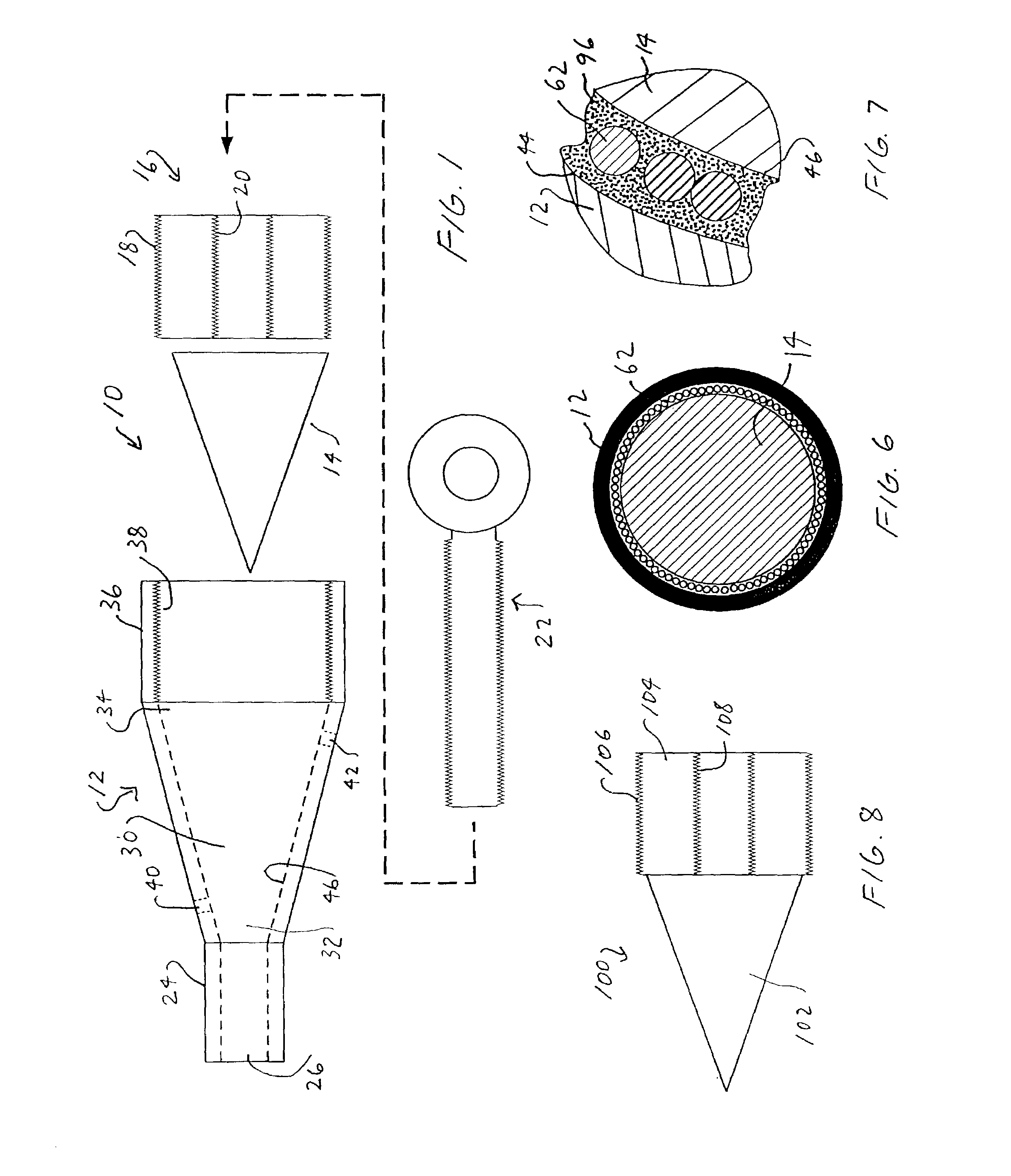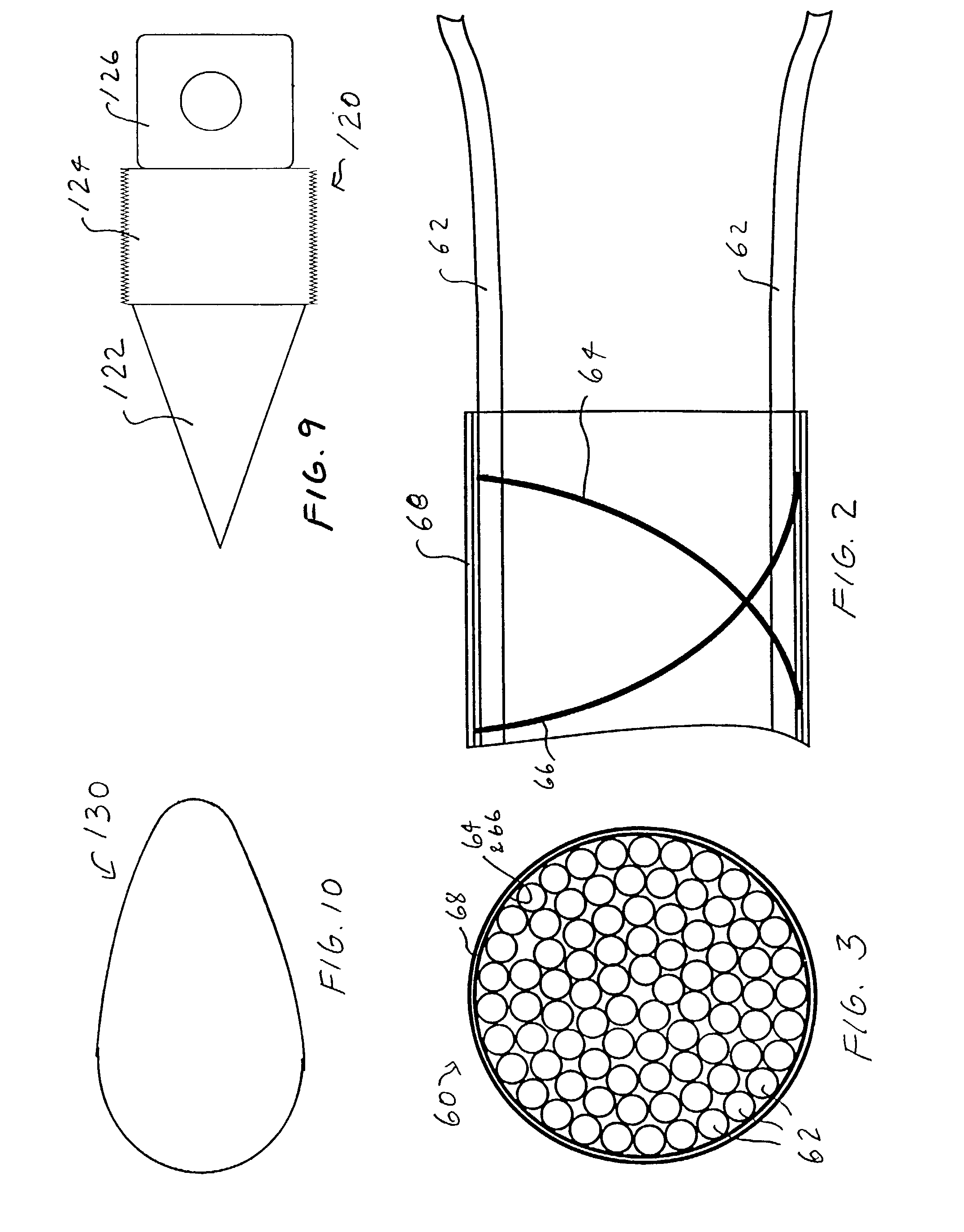Composite tensioning members and method for manufacturing same
- Summary
- Abstract
- Description
- Claims
- Application Information
AI Technical Summary
Benefits of technology
Problems solved by technology
Method used
Image
Examples
Embodiment Construction
[0045]Turning to FIG. 1, there is shown an exploded view of the termination fitting end 10 which comprises a termination fitting body 12, a deflecting or splaying means, such as a cone insert 14, and a means to secure the cone insert 14, such as a closeout collar nut. Closeout collar nut 16 has external threads 18 and an internally threaded hole 20. A threaded eyehook portion 22 of a turnbuckle portion is sized and threaded to be threadably engagable with internal threads 20 of the closeout collar nut. Cone insert 14 is preferably constructed of a strong and rigid material such as stainless steel, aluminum, titanium, and some other strong material. Termination fitting body 12 has a proximal end 24 with an axial bore 26 formed therethrough. An intermediate portion 28 of termination fitting has a flared interior cavity 30 which flares outwardly from its proximal end 32 to its distal end 34 to define a frusto-conical shaped cavity. Termination housing has a distal end 36 which has atta...
PUM
| Property | Measurement | Unit |
|---|---|---|
| Angle | aaaaa | aaaaa |
| Force | aaaaa | aaaaa |
| Strength | aaaaa | aaaaa |
Abstract
Description
Claims
Application Information
 Login to View More
Login to View More - R&D
- Intellectual Property
- Life Sciences
- Materials
- Tech Scout
- Unparalleled Data Quality
- Higher Quality Content
- 60% Fewer Hallucinations
Browse by: Latest US Patents, China's latest patents, Technical Efficacy Thesaurus, Application Domain, Technology Topic, Popular Technical Reports.
© 2025 PatSnap. All rights reserved.Legal|Privacy policy|Modern Slavery Act Transparency Statement|Sitemap|About US| Contact US: help@patsnap.com



